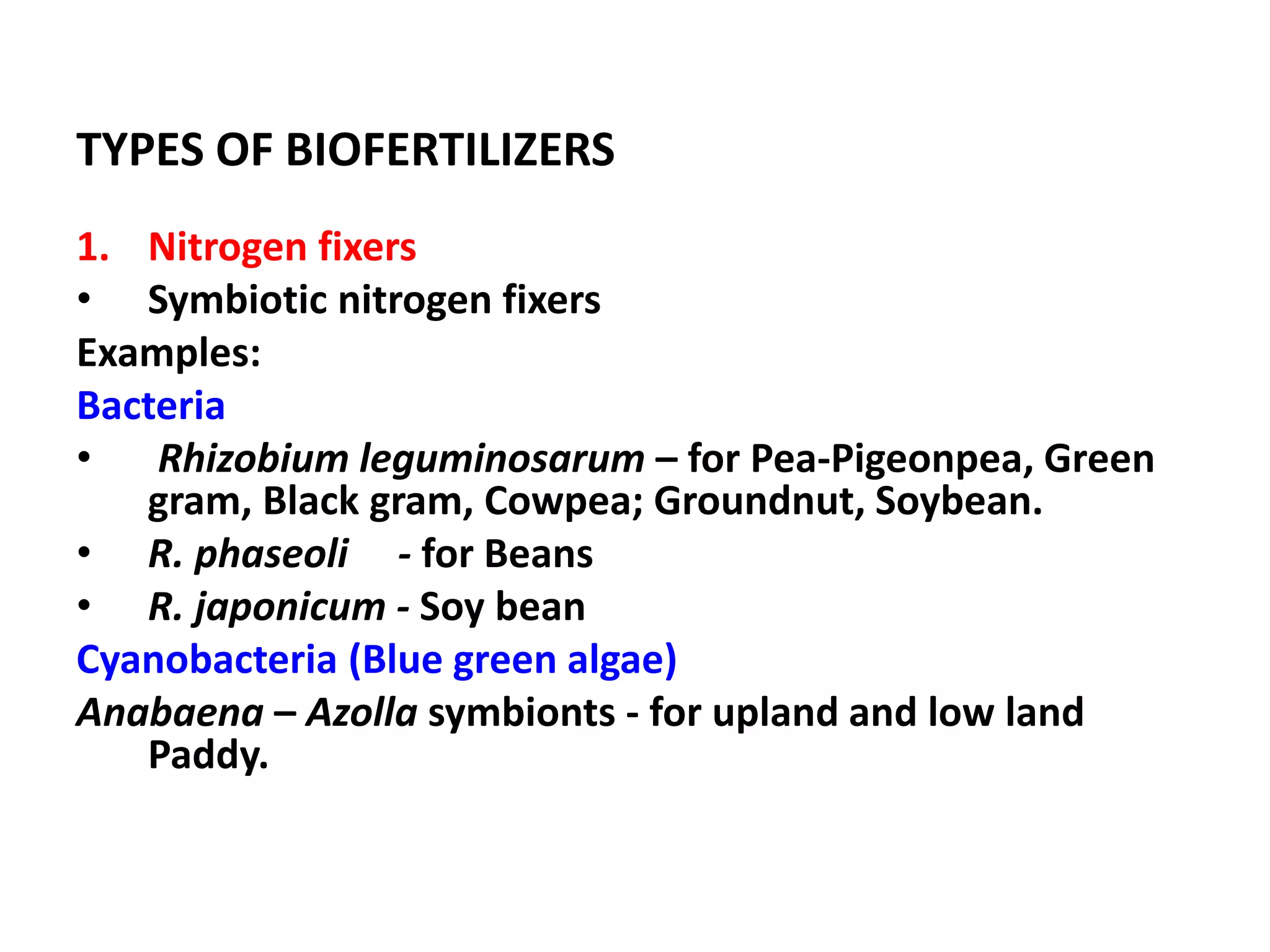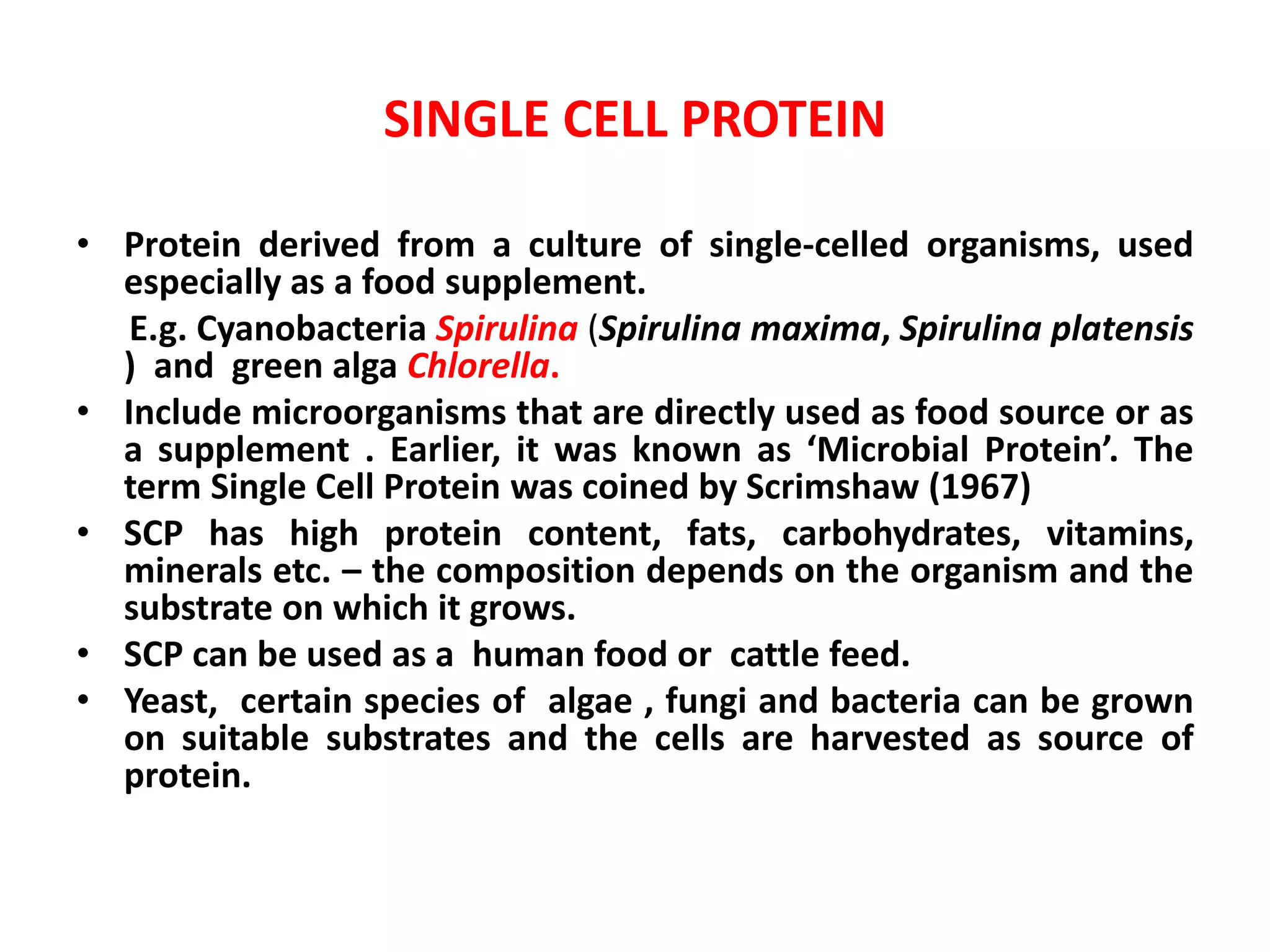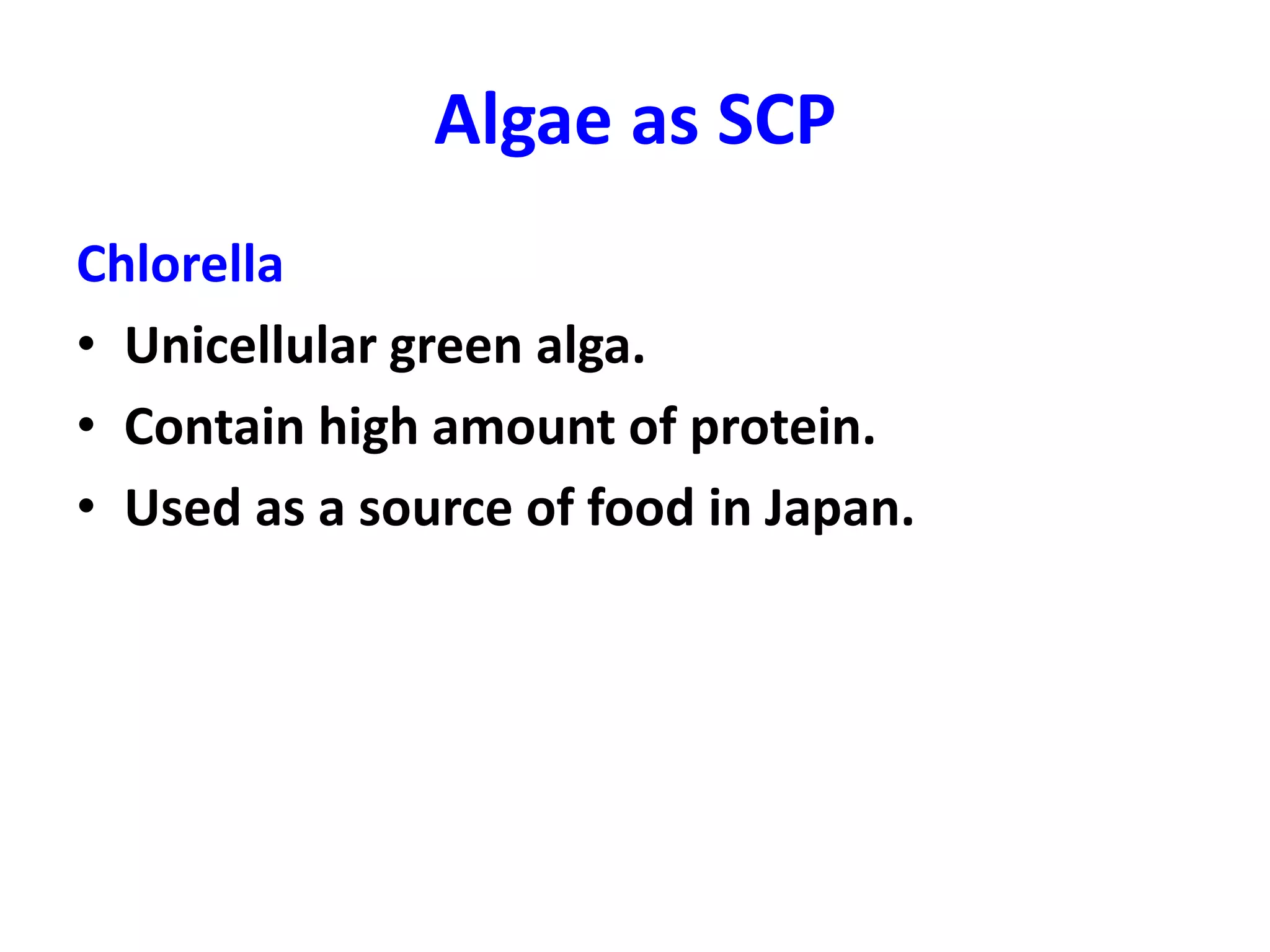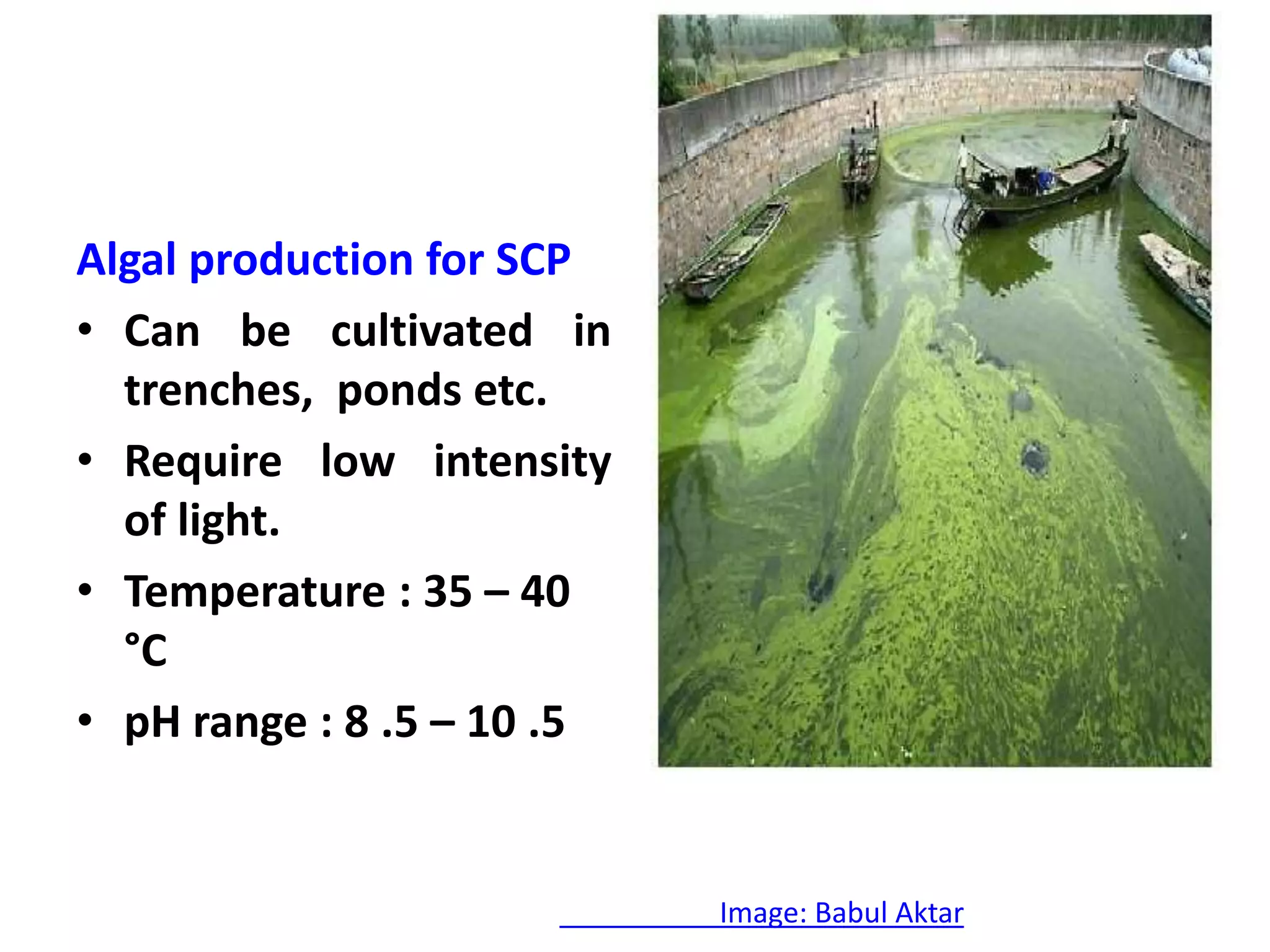The document discusses the role of microbes in the nitrogen cycle, detailing processes such as nitrogen fixation, ammonification, nitrification, and denitrification, which are essential for nutrient cycling in ecosystems. It highlights the significance of both free-living and symbiotic nitrogen-fixing bacteria and their contributions to agriculture through biofertilizers. Additionally, it explores the production and applications of single-cell proteins and fermented products like curd and vinegar, emphasizing their importance in food systems and sustainable agriculture.













































































